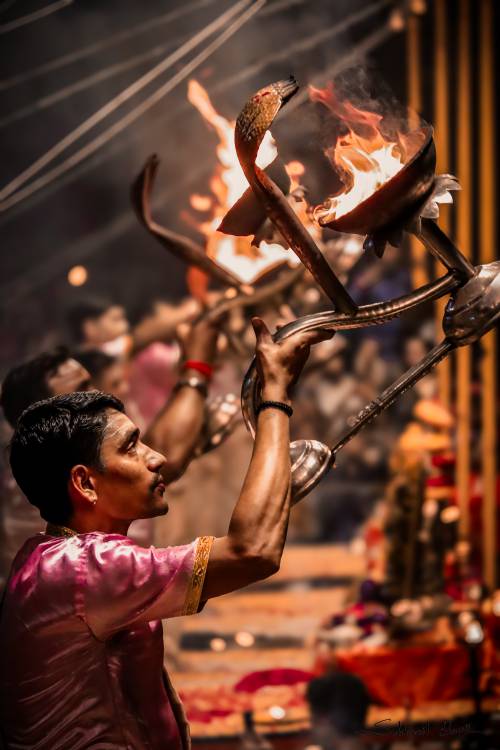
FAQ About The Cultural Significance of Chanting in Spiritual Practices

What is chanting in spiritual practices?
Chanting in spiritual practices refers to the rhythmic speaking or singing of words or sounds, often in a repetitive manner, which is used across various religions and spiritual traditions. It is often intended to bring about spiritual awakening, increase mindfulness, and elevate one's consciousness. Chanting can involve sounds like words, phrases, or syllables considered sacred within a particular tradition.

How does chanting impact community and identity?
Chanting strengthens community and identity by fostering a sense of shared experience and common purpose among participants. It often plays a role in collective worship, rituals, and community gatherings, reinforcing group bonds and cultural identity. The shared vocal activity can create a powerful sense of unity and connectedness, transcending individual differences.

What are some examples of chanting in different cultures?
Examples of chanting in different cultures include the Gregorian chants in Christian monastic traditions, Tibetan Buddhist chants, Hindu Vedic chants, Islamic Sufi zikr (remembrance), and Native American tribal chants. Each of these examples is rooted in the unique spiritual beliefs and practices of the corresponding culture, often understood as a deeply sacred activity.

Why is chanting considered spiritually significant?
Chanting is considered spiritually significant because it is believed to calm the mind, promote focus, and raise one's spiritual awareness. It is often seen as a form of devotion and discipline that helps individuals connect with the divine or higher planes of consciousness. The repetitive nature of chanting is said to facilitate a meditative state and, for many, a direct experience of spiritual truths.

What is the historical background of chanting in spiritual practices?
Historically, chanting has been a part of spiritual practices for centuries. It is believed to have originated in ancient religious rituals where melodies and rhythms played key roles in performing sacred rites. Many early religious texts, such as the Vedas in Hinduism, were chanted to preserve them through oral tradition. Over time, chanting developed into a distinct form of spiritual expression within various traditions.

How do different religions use chanting?
Different religions use chanting in unique ways specific to their beliefs and traditions. For example, in Hinduism, the chanting of mantras is integral to meditation and worship. In Buddhism, chanting sutras helps in focusing on the teachings of Buddha. Christianity uses chants like Gregorian chants for sacred liturgies, while in Islam, chanting is part of Sufi mystical practices. Each practice reflects the spiritual objectives of the particular religion.

Can chanting have psychological benefits?
Yes, chanting can have psychological benefits, including reducing stress and anxiety, enhancing concentration, and promoting emotional well-being. The repetitive nature of chanting can induce a meditative state that relaxes the mind and lowers stress levels. Studies have shown it can positively affect mental health by encouraging a serene and centered mindset.

What are Vedic chants and their significance?
Vedic chants are a form of chanting rooted in the ancient Indian scriptures called the Vedas. They are considered an essential part of Hindu ritual and spiritual tradition. Vedic chants involve specific rules of pronunciation, intonation, and metric formulas, reflecting the spiritual knowledge encapsulated in these ancient texts. They are believed to aid in spiritual growth and dharma realization.

How does chanting relate to meditation?
Chanting and meditation are closely related as chanting is often used as a tool to deepen meditation practice. The repetitive nature of chanting helps focus the mind and eliminate distractions, which are critical components of effective meditation. Chanting can induce a trance-like state that facilitates deeper meditation by calming the body and centering thoughts.

Is chanting present in modern spiritual practices?
Yes, chanting is very much present in modern spiritual practices. Many contemporary spiritual movements and meditation centers incorporate chanting into their practices as a form of devotion, meditation technique, or method to enhance spiritual energy. It is often used in yoga studios, wellness retreats, and New Age practices to create a peaceful and transformative environment.

What is the role of sound in spiritual chanting?
Sound plays a central role in spiritual chanting as it is believed to carry spiritual vibrations that can influence one's mental and emotional state. Different tones and frequencies are thought to align with specific spiritual energies or states of consciousness. The power of sound in chanting is considered to affect not just the individual chanter but also the environment in which chanting occurs.

Do scientific studies support the effects of chanting?
Yes, scientific studies have begun to explore and support some of the effects of chanting. Research has shown that chanting can activate particular brain areas related to positive emotional responses and relaxation. Studies on the "OM" mantra, for example, have indicated its potential impact on the brain waves, bringing about states of calmness and mental clarity.

What is Gregorian chanting?
Gregorian chanting is a style of plainchant that was developed during the medieval period and is named after Pope Gregory I. It is characterized by its monophonic, unaccompanied vocal music, particularly used in the Roman Catholic liturgy. Gregorian chants are typically sung by choirs during religious services, noted for their serene and meditative quality, which is intended to elevate the spiritual experience.

How do chanting practices differ between secular and religious contexts?
In religious contexts, chanting is primarily used as a spiritual tool tradition embedded in worship and rituals, addressing metaphysical themes like divinity and transcendence. In secular contexts, chanting might be utilized for its meditative and psychological benefits, often removed from specific religious connotations. While the underlying physiological effects of chanting can be similar, the intent and context often differ significantly.

Can chanting help in healing practices?
Chanting is often used in healing practices as it is believed to promote emotional and physical well-being. The rhythmic and repetitive nature can help individuals achieve a state of relaxation, reducing stress and promoting healing. Many holistic health practitioners incorporate chanting as part of therapies to balance energy and foster a sense of peace within the body.

What role does chanting play in yoga?
In yoga, chanting plays a crucial role as it helps in focusing the mind and preparing the body for meditation. Mantras like 'OM' are frequently used to align breathing with movement, creating a holistic experience integrating mind, body, and spirit. Chanting in yoga helps elevate the practitioner's awareness and deepen the overall practice by setting a meditative tone.

What is the Sufi practice of chanting?
The Sufi practice of chanting, often referred to as 'zikr' or 'dhikr,' involves the repetition of divine names or short phrases in praise of God. Sufis believe that through chanting, they can achieve a closer connection with the divine and purify the heart. These chants are often performed in communal gatherings, establishing spiritual fellowship and deepening the practitioners' faith.

Are there any famous texts associated with chanting?
Yes, several famous texts are associated with chanting. For instance, the Rigveda, Yajurveda, and Samaveda are foundational texts in Hinduism often chanted. The Buddhist Heart Sutra and the Lotus Sutra are commonly chanted in various Buddhist traditions. Additionally, Gregorian chants use texts from the Roman Catholic liturgy, such as psalms and hymns, as integral components.

How is chanting used in Buddhist practices?
In Buddhist practices, chanting is often used to recite sutras or mantras, aiding in concentration and meditation. Buddhist chanting serves both a ritualistic and meditative function, helping to internalize the teachings of Buddha. It's a way for practitioners to connect with the Dharma and seek inner peace and enlightenment. In different traditions, such as Tibetan or Zen Buddhism, chanting may vary in style and purpose.

What are some of the common misconceptions about chanting?
A common misconception about chanting is that it is solely a religious practice. While deeply rooted in many religious traditions, chanting also plays a role in secular and health-oriented contexts. Another misconception is that chanting must involve specific words or mantras; however, the practice can be personal and varied, focusing more on sound and intention than specific words.
